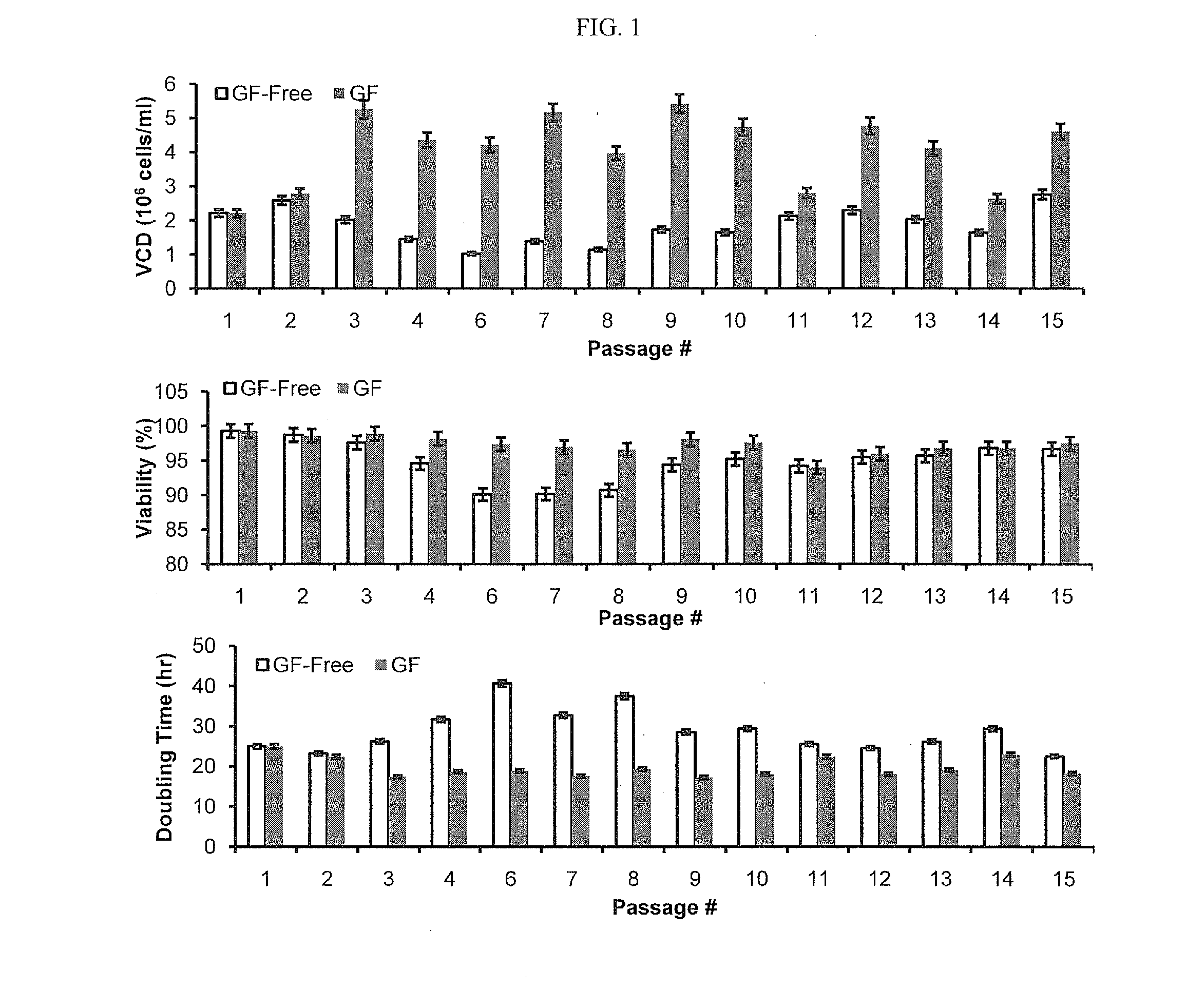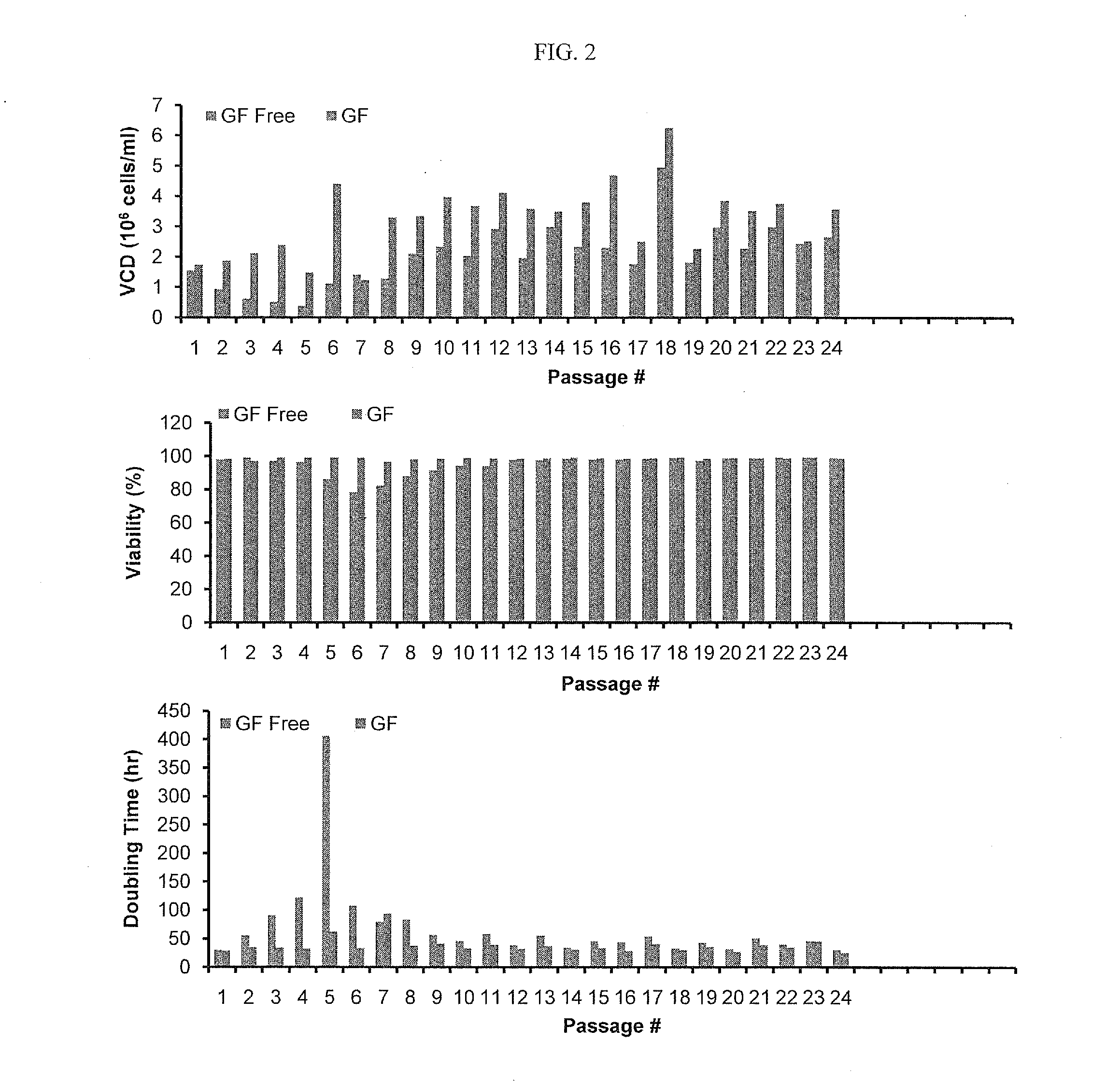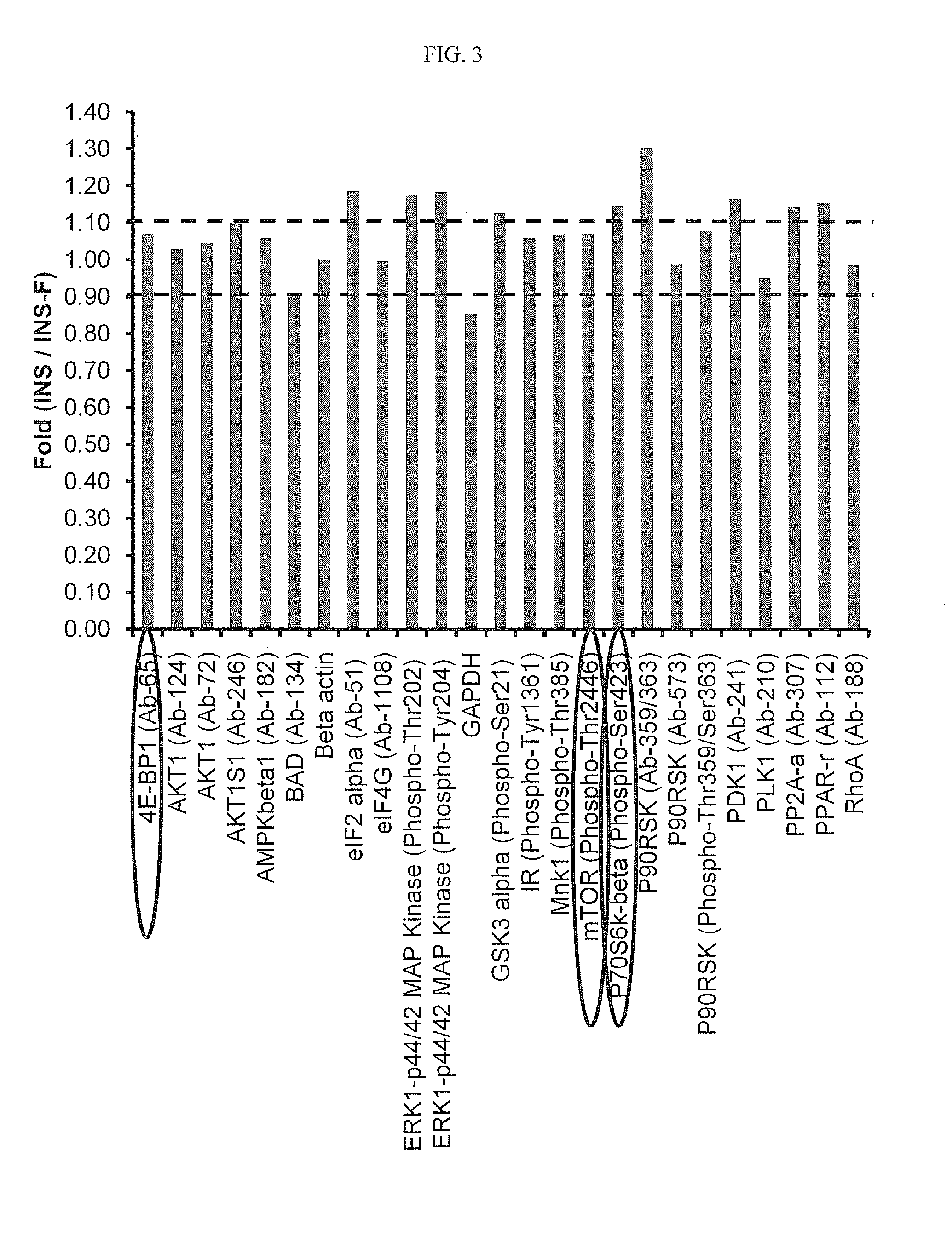Mammalian cell culture processes for protein production
a cell culture and protein technology, applied in the field of mammalian cell culture processes, can solve the problems of affecting the immunogenicity and clearance rate of products, affecting the viability of cells remaining in the cell culture process, and the run time of cell culture processes, especially non-continuous processes, can not be guaranteed, and achieve the effects of increasing cell viability, reducing protein aggregation, and increasing viable cell density
- Summary
- Abstract
- Description
- Claims
- Application Information
AI Technical Summary
Benefits of technology
Problems solved by technology
Method used
Image
Examples
example 1
CHO Cells Were Able to Grow Under GF-Free Condition
[0095]1. Thaw a new vial of cells in early passage and culture in platform medium (with 1 or 10 mg / L insulin) for 2 passages.[0096]2. At passage 3, transfer the cells to basal media without insulin, and keep splitting every 3 to 4 days at a density of 0.6×106 cells / ml.[0097]3. In the first few passages under insulin free conditions, cell growth may significantly slow down and viability may drop (˜80%). Meanwhile, ammonium production may be increased due to insufficient glucose uptake and oxidation of amino acids as an energy source. As a result, pH in flasks may increase. CO2 level may need to be adjusted / increased accordingly to control pH in a range of 7.0-7.3. This is very important to maintain the cells in a healthy state.[0098]4. In general, spent medium carried into a new passage should be less than 30%. In case cell growth is too slow to satisfy the criterion, cells could be centrifuged down and transferred at a desired numbe...
example 2
Removal of Insulin did not Drastically Impact the mTOR Pathway
[0101]The purpose of this study was to use antibody array to compare the phosphorylation / expression level of proteins involved in mTOR in cell grown with and without growth factor, insulin, thereby demonstrating that from a molecular and cell biology perspective that cells are able to grow under GF-free condition.
Antibody Array Sample Preparation
[0102]Clone 40A6 cultured under insulin-free or insulin containing basal medium. 5×106 viable cells were sampled for each condition on day 3. Cells were centrifuged down at 500 g for 5 min and at 4° C. Cells were washed with 10 ml ice cold 1× PBS, and centrifuged down at 500 g for 5 min and at 4° C. Cells were always kept on ice or 4° C. during sample processing. After dumping the PBS, cells were frozen at −70° C. immediately and stored at −70° C. till antibody array analysis
Antibody Array Protocol
Protein Extraction
[0103]Wash the cells with ice cold 1× PBS. Add Lysis Beads and Ext...
example 3
GFs / Proteins / Peptides Free Media Improve Process Performance
[0109]Cells: Clone 63C2 producing aCD40L fusion protein.
Cell Culture Parameters:
[0110]Shaking speed: 150 rpm; shake flask: 250 ml or 500 ml baffled shake flasks (Corning Inc.) with 100 ml or 200 ml working volume; temperature: 37° C.; CO2: 6% in general.
[0111]Basal: medium with or without insulin.
[0112]Feed: medium with or without insulin and LONG®R3.
[0113]INS-Free: no insulin in basal, no insulin and no LONG®R3 in feed.
[0114]INS: 1 mg / L insulin in basal, 10 mg / L insulin in feed.
[0115]Feeding strategy: feeding begins on day 3, feed 3.64% initial culture volume till day 14.
[0116]Sampling: at designated time points, samples were taken to measure cell density and viability with CEDEX®, titer with HPLC, and high molecular species with size exclusion chromatography (SE).
PUM
| Property | Measurement | Unit |
|---|---|---|
| Concentration | aaaaa | aaaaa |
| Concentration | aaaaa | aaaaa |
| Density | aaaaa | aaaaa |
Abstract
Description
Claims
Application Information
 Login to View More
Login to View More - R&D
- Intellectual Property
- Life Sciences
- Materials
- Tech Scout
- Unparalleled Data Quality
- Higher Quality Content
- 60% Fewer Hallucinations
Browse by: Latest US Patents, China's latest patents, Technical Efficacy Thesaurus, Application Domain, Technology Topic, Popular Technical Reports.
© 2025 PatSnap. All rights reserved.Legal|Privacy policy|Modern Slavery Act Transparency Statement|Sitemap|About US| Contact US: help@patsnap.com



